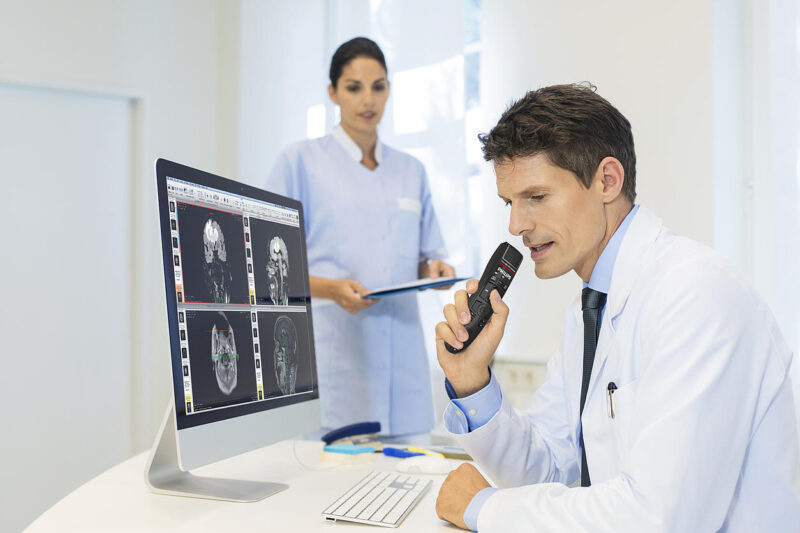Streamlining Dictation for Healthcare with Speech Recognition
The standard dictation and transcription workflow can slow down turn-around time for documentation. This workflow requires recording a dictation and transferring that dictation to the transcriptionist who then downloads, interprets, and transcribes the dictation for a final review. In this article, we’ll examine how to streamline dictation for healthcare and reduce turn-around time with speech recognition.
What is the benefit of front end speech recognition?
We’ve come a long way from written notes. Even voice recorders are dated now with the rise of medical voice recognition software and natural language processing. Front-end speech recognition allows for more productivity by converting speech to text in real-time. Front-end speech recognition has many practical applications. More advanced front-end speech recognition solutions can detect and identify speech patterns and use context to improve accuracy.
For example, advanced front-end speech recognition would be able to differentiate between ‘colon’ (the organ) and the punctuation mark ‘:’ based on the sentence dictated.
Back-end speech recognition adds another step of review. After a dictation is converted to text through speech recognition, the text is sent to transcriptionists to edit. Front end speech recognition is real-time, while back end speech recognition can take quite a bit longer depending on the volume of text and how quickly the transcriptionists work.
Back-end speech recognition can be more accurate than front end speech recognition. There are transcriptionists that can catch any mistakes that the speech recognition software makes. Front end and back end speech recognition are both powerful and they continue to become more accurate.
How is speech recognition used in healthcare?
A recent Reaction Data survey indicated that a majority of physicians are using speech recognition. With front end speech recognition, healthcare professionals can enter information into an EHR or other information system in real-time. With the right software, healthcare professionals can use wireless microphones, table mikes, or even smartphones to make their dictations and store the information at the same time.
Speech recognition is important to healthcare. Professionals using speech recognition in healthcare now use medical voice recognition software that is designed to recognize and favor healthcare terminology. This can help improve healthcare workflow management by diminishing the time it takes to enter and review information.
Searching for speech recognition software?
Start recording your dictations accurately with our easy-to-use platform, Fusion Narrate.
How does speech recognition streamline dictation for healthcare?
Many healthcare professionals have begun using speech recognition to get more out of the initial dictation. In some cases, medical speech recognition software has allowed healthcare companies to reduce transcription spending. Physicians can record dictations directly into healthcare information systems and self-edit.
Some speech recognition software, including Fusion Narrate, allows users to build voice shortcuts to run macros and navigate their computer hands-free.
Healthcare companies can see a benefit from speech recognition regardless of how technologically advanced they are now. Even in companies where written notes or audio logs are the main form of communication can easily integrate speech recognition without completely changing their current processes. Speech recognition makes dictation for healthcare more efficient, which saves money, allows more time with patients, and improves overall clinician satisfaction.
